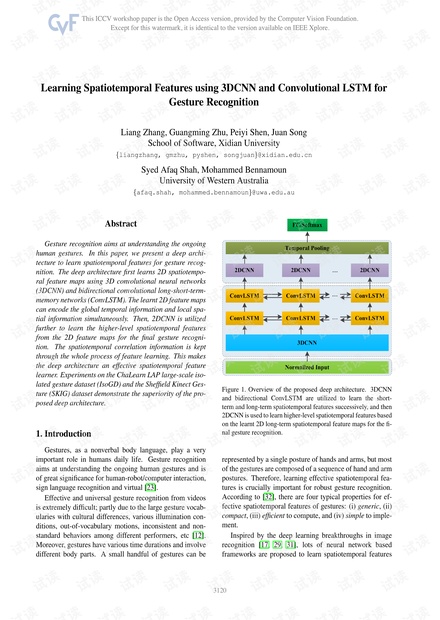没有合适的资源?快使用搜索试试~ 我知道了~
使用3DCNN和卷积LSTM进行手势识别学习时空特征
39 下载量 159 浏览量
2021-02-25
07:31:22
上传
评论 6
收藏 690KB PDF 举报
温馨提示

试读
9页
使用3DCNN和卷积LSTM进行手势识别学习时空特征
资源推荐
资源评论
资源评论

weixin_38608866
- 粉丝: 7
- 资源: 915
上传资源 快速赚钱
 我的内容管理
展开
我的内容管理
展开
 我的资源
快来上传第一个资源
我的资源
快来上传第一个资源
 我的收益 登录查看自己的收益
我的收益 登录查看自己的收益 我的积分
登录查看自己的积分
我的积分
登录查看自己的积分
 我的C币
登录后查看C币余额
我的C币
登录后查看C币余额
 我的收藏
我的收藏  我的下载
我的下载  下载帮助
下载帮助

 前往需求广场,查看用户热搜
前往需求广场,查看用户热搜安全验证
文档复制为VIP权益,开通VIP直接复制
 信息提交成功
信息提交成功
